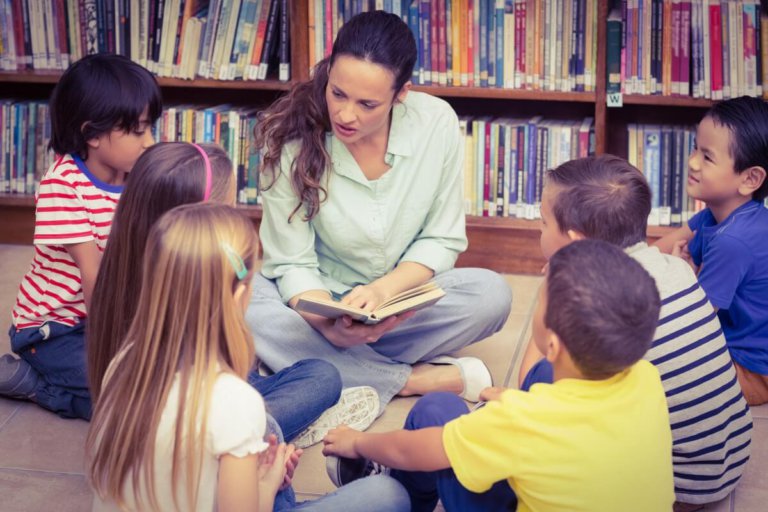
Teaching social and emotional learning (SEL) skills is just as important as discipline and academics in the classroom.
Not only are kids with strong SEL skills better behaved in class and can communicate well with their peers, they are also learning how to become more capable adults in the future.
According to CF.org, “People with strong social-emotional skills are better able to cope with everyday challenges and benefit academically, professionally, and socially.
“From effective problem-solving to self-discipline, from impulse control to emotion management and more, SEL provides a foundation for positive, long-term effects on kids, adults, and communities.
“Children thrive. Schools win. Workplaces benefit. Society strengthens. All due to social-emotional learning.”
Schools today are helping kids develop these skills as it’s also seen as important to survive in the future workplace.
According to WeForum, “Today’s job candidates must be able to collaborate, communicate and solve problems – skills developed mainly through social and emotional learning (SEL). Combined with traditional skills, this social and emotional proficiency will equip students to succeed in the evolving digital economy.”
Teachers seeking new ways to teach kids social and emotional learning skills
Q2: Stories offer rich opportunities to build students’ social-emotional learning. Which books will you use this year to nurture social-emotional learning among students and for what specific purposes? #NCTEchat pic.twitter.com/pZf9IkxGk5
— NCTE (@ncte) August 19, 2019
Marissa King, a fifth-grade teacher for Tulsa Public Schools in the US, found that choosing stories about real-life heroes, such as Malala Yousafzai, is a good way for integrate SEL skills in the classroom.
She wrote on Edutopia, “During my first year as a fifth-grade teacher, I built the introductory English language arts unit around stories of people overcoming challenges.
“I started with the story of the youngest Nobel Prize laureate, Malala Yousafzai, fighting for the right of girls to attend school despite violent attacks.
“Malala’s story, read in both article and narrative forms, added the perfect mix of inspiration and relatability while clearly illustrating the targeted SEL skill of persevering in the face of challenge.”
Inspirational stories about people who don’t give up in the face of adversity helps kids apply the same mindset when faced with difficult talks.
Other inspirational figures from stories she uses to teach kids about perseverance are Esperanza from Esperanza Rising, by Pam Muñoz Ryan, and Parvana, protagonist of The Breadwinner by Deborah Ellis.
As King wrote, “When things got tough in class, we borrowed strategies from Esperanza, Malala, and Parvana to remind ourselves not to give up. Their stories became class rallying cries for persevering through challenges: “Stick with it like Malala!” “Take on a new challenge like Parvana!”
King also said that different stories can resonate for kids with different interests. For her sports-obsessed students, she introduces them to books about famous athletes who have overcome obstacles and applied SEL skills to help them through difficult times.
“Not all students relate to each story, so choose multiple stories that emphasize the same skill in different contexts. Malala’s story is an impactful way to learn about overcoming challenges, but it might not help students whose challenges are ones without a perpetrator of injustice, so I might use the book Spare Parts to illustrate how an underresourced robotics team persevered even when their competition seemed daunting.”
Social and emotional learning should be taught sooner rather than later
First two days of school and we hit many my favorite books. Lots of social emotional learning on these pages. They let to great conversations with my new #Kindergarten Ss. pic.twitter.com/nwg901HLP4
— Mrs. Damico (@LCEMrsDamico) August 16, 2019
King also stressed the importance of introducing these inspirational narratives early on in the semester as it might be too late if introduced later on.
“By the time a crisis hits, it’s too late to introduce a shared SEL narrative. Students rarely have the patience or fortitude to listen carefully to a new story when they’re tearfully managing a loss or balling their fists in anger.”
If a school is not able to integrate social and emotional learning skills in a classroom, parents can use this tactic to help their children develop these skills.
It also serves the purpose of encouraging kids to read, at a time where child literacy rates are at an all-time low.
Parents and teachers who need some ideas for books that teach kids SEL skills can check out 50 Must-Have Picture Books to Teach Social Emotional Skills by WeAreTeachers.
Liked this? Then you’ll love…
Art classes improve students’ discipline, writing and compassion
Is social and emotional learning a springboard for student success?







